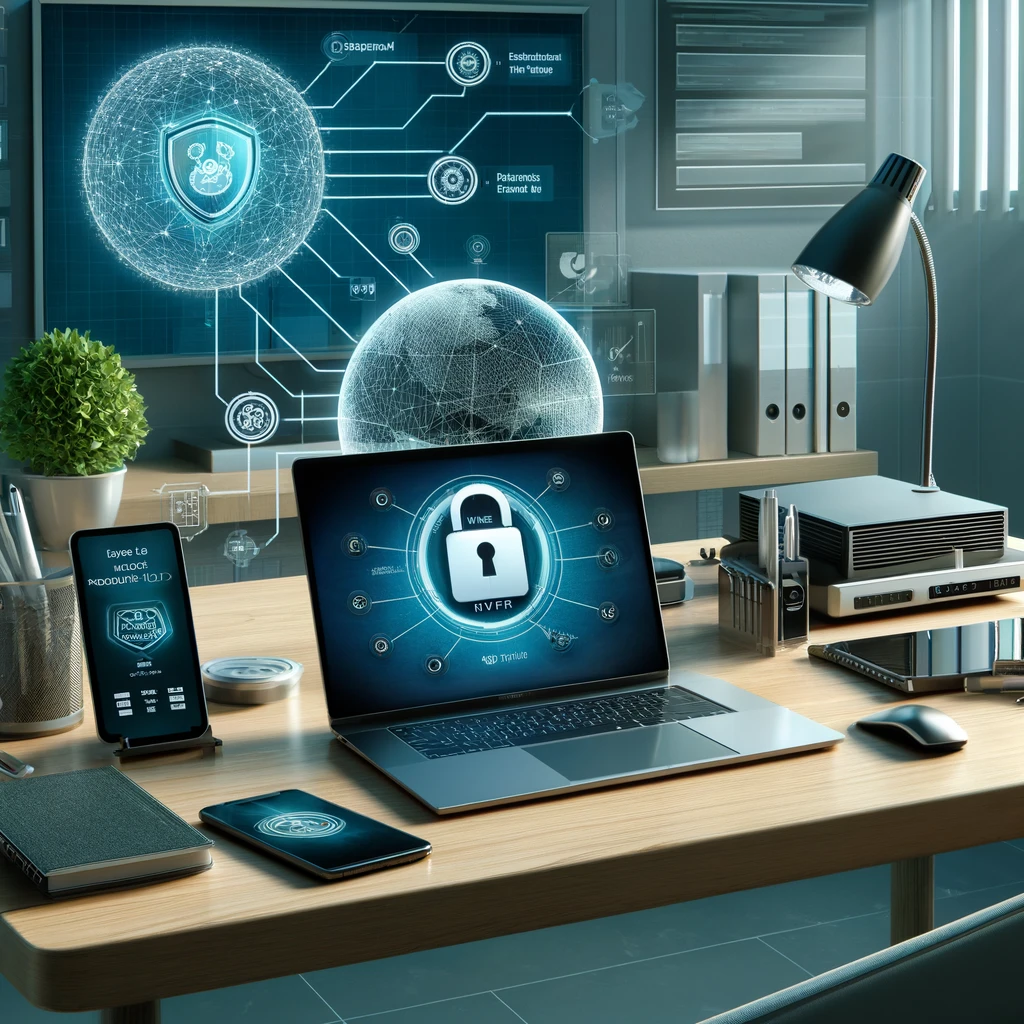The paradigm shift towards remote work, triggered by the global pandemic, has presented numerous benefits and challenges. While telecommuting offers increased flexibility, reduced office expenses, and an expanded talent pool, it also introduces various cybersecurity concerns. Remote work can expose your organization to a myriad of potential security vulnerabilities as employees access sensitive information and systems from diverse locations and devices without the protective measures typically found in a controlled office environment.
To protect your organization from potential cyber threats, it is crucial to establish a comprehensive and robust cybersecurity framework that accounts for the unique challenges of remote work. It’s essential to strike the right balance between maintaining a high level of security and enabling employees to be productive, regardless of their location.
In this blog post, we will explore the primary cybersecurity risks associated with remote work and discuss best practices your organization can adopt to maintain a strong cybersecurity posture while supporting a remote workforce. By adhering to these guidelines and implementing the appropriate security measures, your organization can securely leverage the benefits of telecommuting and minimize its potential risks.
Primary Cybersecurity Risks Associated with Remote Work
The shift to remote work has brought several cybersecurity risks to the forefront, including:
1. Unsecured home networks: Home networks typically lack the same level of security controls and monitoring found in enterprise environments, creating potential entry points for cyber threats.
2. Insecure devices: Remote employees may use personal devices to access work resources, which may lack updated security features and protection against malware.
3. Vulnerable communication channels: Cybercriminals can intercept or eavesdrop on sensitive information due to our increased reliance on virtual communication tools.
4. Phishing and social engineering attacks: Cyber attackers often take advantage of remote work situations with targeted phishing campaigns and social engineering tactics designed to exploit worker isolation, fear, and uncertainty.
Best Practices for Maintaining Cybersecurity in Remote Work Environments
To mitigate the cybersecurity risks associated with remote work and maintain a robust security posture, your organization should consider implementing the following best practices:
1. Establish a Remote Work Security Policy
Develop a comprehensive remote work security policy outlining the acceptable use of devices, networks, and applications, as well as guidelines for securing home networks and systems. Ensure employees are aware of their responsibilities and provide regular training to reinforce safe remote working practices.
2. Implement a Virtual Private Network (VPN)
A VPN creates an encrypted tunnel between an employee’s device and your organization’s network, ensuring data privacy and security during transmission. Require staff to use a reliable and secure VPN when accessing corporate resources from home or other remote locations.
3. Use Multi-Factor Authentication (MFA)
MFA enhances security by requiring users to provide at least two forms of identification before accessing sensitive systems or data. Implement MFA minimally across your organization for accessing email, applications, and other essential resources.
4. Regularly Update and Patch Systems and Software
Ensure that remote employees are using up-to-date software and operating systems with the latest security patches applied. Establish a clear process for the distribution and installation of updates on remote devices to prevent vulnerabilities.
5. Employ Endpoint Detection and Response (EDR) Solutions
EDR solutions provide real-time monitoring and protection for devices connected to your organization’s network, enabling swift detection and response to potential threats. Use EDR tools to monitor the security posture of employee devices and promptly address any issues discovered.
6. Encourage the Use of Encrypted Communication Channels
Promote the use of encrypted messaging, video conferencing, and file-sharing tools to protect sensitive communications from eavesdropping or interception. Train employees to recognize and avoid unsecured communication methods and to validate the authenticity of emails and messages before opening attachments or clicking on links.
7. Perform Regular Security Awareness Training
Educate employees on cybersecurity best practices, emphasizing their roles and responsibilities in protecting sensitive data and systems. Offer regular, targeted training and simulate phishing attacks or other security scenarios to help workers better recognize and respond to potential threats.
8. Plan and Practice Your Incident Response Strategy
Develop a clear incident response plan for handling security breaches or other incidents involving remote employees. Regularly review and update this plan and conduct practice scenarios to ensure your organization is well-prepared to handle any incidents that may arise effectively.
Conclusion
The transition to remote work presents unique challenges for maintaining a strong cybersecurity posture. By understanding these challenges and implementing the best practices outlined above, your organization can mitigate the cybersecurity risks associated with remote work while maintaining a secure and productive telecommuting environment.
Partner with The Saturn Partners to fortify your organization’s cybersecurity defenses and securely navigate the telecommuting era. Our professional cybersecurity services offer customized guidance and solutions to help you manage the unique risks and challenges of remote work, ensuring your organization is well-protected and resilient against evolving threats. Reach out today to discover how we can empower your remote workforce while maintaining robust cybersecurity standards.

